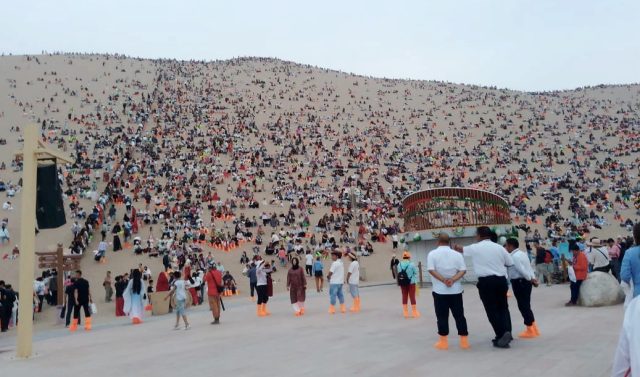
By JOSFYN UBA
From my childhood, the historic evolution of China had always intrigued me and my siblings, especially as we were exposed early to watching Chinese films starring screen greats like Jackie Chan, Bruce Lee, and others.
My late father’s knowledge and admiration for this Southeast Asian country further fostered my excitement at everything China, even though every nation has its own growth format.
With the advent of the Cable Network, CNN, I got a little opportunity to see the outside world more than before.
Then came China Global Television Network (CGTN), which opened a wider window to see China in its true characteristics. I admire their steady and intentional growth pattern. The People’s Republic of China basks in breathtaking cultural orientation, infrastructural development, and agriculture and food sufficiency.
I was visibly excited when I got an invitation to visit China as a Nigerian delegate for the Fourth Dialogue on Exchanges and Mutual Learning Among Civilizations, organized by the China Centre for Contemporary World Studies (CCCWS)
It was my first time in China. So, I looked forward to it. The flight from Nigeria to China took an average of 15 hours and 56 minutes.
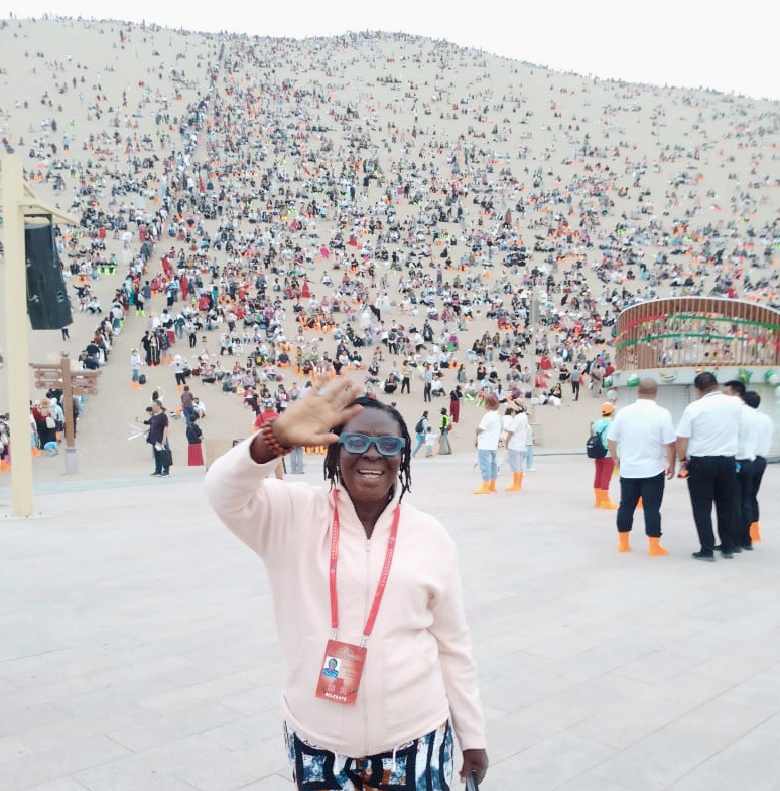
Even as I missed my connecting flight from Doha to Beijing, I wasn’t perturbed. Instead, I took in everything as a worthwhile experience. Again, remembering my family mantra, which says, “If it’s not going your way, its going God’s way,” was the most soothing balm of that episode.
Dunhuang: Symbol of a new civilization and international cooperation
The mission to the distant world of China was to be part of a top-notch summit of the Fourth Dialogue on Exchanges and Mutual Learning among Civilizations in Dunhuang, northwest China’s Gansu Province, which opened on May 30.
The event had about 400 people in attendance, including political leaders, scholars, artists, and writers, heads of international and non-governmental organizations from various cultures, seeking ways to foster understanding, peace, and cooperation
Participants came together, bringing with them narratives shaped by their unique civilizational experiences to share with others towards a better future and sustainable development for all whole humanity as organized by the Chinese Association for International Understanding (CAFIU). The essence of the conference is understandable.
In the views of Oleg Vavilov, Deputy Director of the Institute of China and Contemporary Asia of the Russian Academy of Sciences and a fellow delegate, “Dunhuang is the root of international cooperation dating back to ancient ages. And now, I see the Dunhuang maybe like a symbol of a new civilization, a civilization without walls, a civilization based on truth. I think it’s very significant that we are meeting in this place. This is very symbolic for our world. I think I would like that the next time we would meet in Dunhuang and we would have a speech about the new millennium, new perspective, new development”.
Dunhuang is a city in China’s northwestern Gansu Province, on the edge of the Gobi Desert. Once a frontier garrison on the Silk Road, it’s known today for the Mogao Caves, a complex of 492 grottoes adorned with Buddhist statuary and frescoes. Carved into the cliffs above the Dachuan River, the caves were created between the 4th and the 14th centuries.
Broader perspectives from China’s citadel of knowledge
The schedule was tight and full of activities. As a matter of fact, during this trip to Dunhuang and Jiayuguan cities in Gansu Province, for the Belt and Road Initiative and Mutual Learning among Civilizations, I was convinced that my admiration for China wasn’t out of place.
The trip was a mix of learning experiences, work, and fun. Our visits to Peking University, Beijing, and Renmin University of China gave me broader perspectives on academic research, policy advising, and people-to-people exchanges between China and the world.
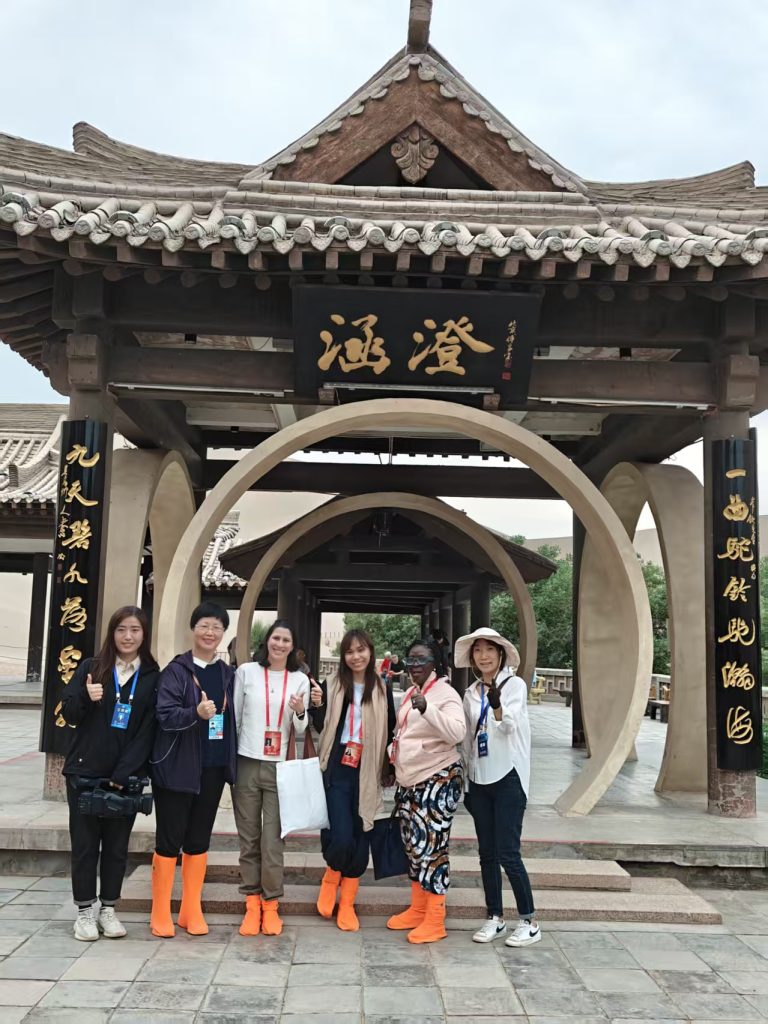
It was indeed worth the while as the outing was loaded with in-depth knowledge of a vibrant China. The days I spent offered me the opportunity to know more about China’s economy, history, politics, and cultural development. I also took away valuable insight of their Belt and Road Initiative as well as People to People Initiative.
I was exposed to the issues of global cooperation and understanding. I was fascinated but also wondered about the uniqueness of the style of governance here and the people’s compliance with constituted authority. I will not forget my Malaysian colleague’s words, Peter Chang would say, “Josfyn, you are just getting converted.” I know it, he would say, “ China module is a clear example to Southeast Asian countries.”
Zixuan Winery: Every sip, a blend of unique taste and culture
Visiting a winery in Zixuan in Jiayuguan was a unique and enchanting experience. We were made to understand, it is Asia’s largest wine cellar. As we approached the winery, we were greeted by stunning views of lush greenery, which is a core characteristics of everywhere in the province. This aesthetic pleasure was most welcoming.
Upon arrival at the winery, our team leader, Gao Lianjia, and the winery managers were so glad to take us on a tour where we learnt about wine-making processes, from grape cultivation to fermentation, and packaging. What was most breathtaking was the large number of wine drums in their millions, the attractive arrangements, and the display of choice wines.
Of course, the major highlight of our visit was the wine tasting. It was a great opportunity to sample a variety of wines produced on-site, including red, white, and even some unique varieties. It was a lifetime experience.
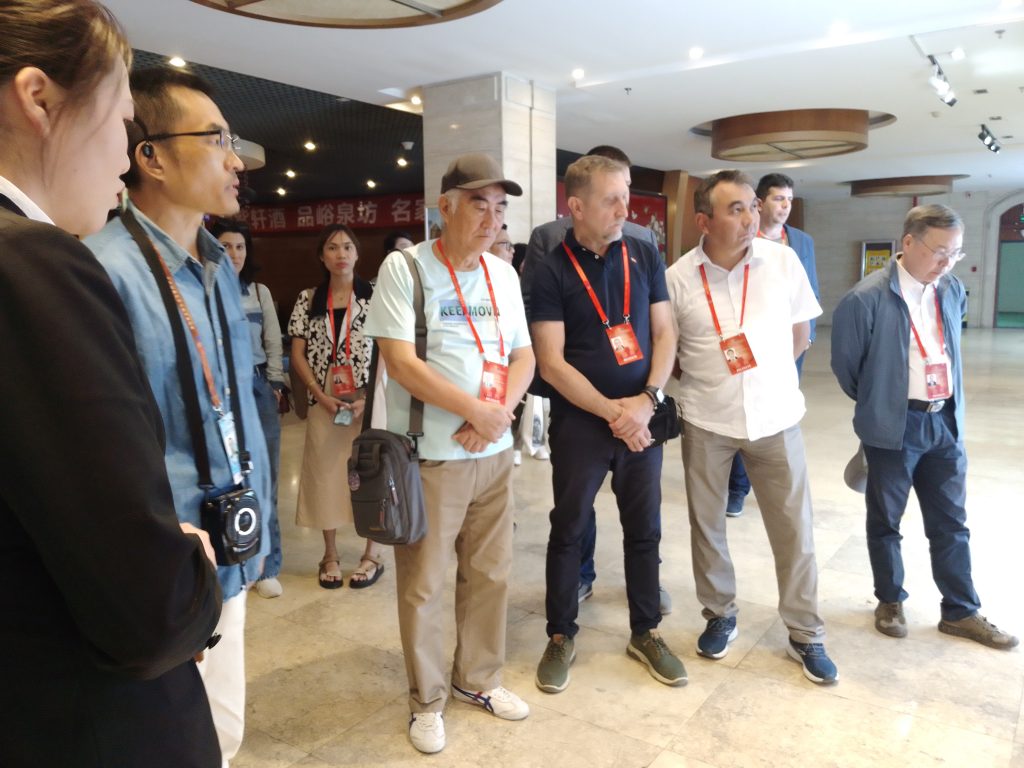
The staff typically provided insights into the flavor profiles, as well as the winemaking philosophy behind the winery. I savoured each tasting moment with so much relish.
Mingsha Shan (Singing Sand Dunes), where childhood memories exist
The trip also took us to the Mingsha Shan (Singing Sand Dunes) and the Crescent Lake in the same city of Dunhuang. Their stunning landscapes and rich cultural heritage are almost indescribable.
We attended an open musical concert at the sand dunes. It was such an incredible and unique experience as it was held in natural amphitheaters, offering a surreal atmosphere against the backdrop of the dunes. People had to climb up to the mountains to capture the stunning landscapes and enjoy the atmosphere of the desert sands. It was an incredible sight that there is a desert in China
The crowd was dizzying. We were told to dress for the desert climate as temperatures can drop at night.
Most fascinating was our footwear. Immediately we alighted from the vehicle, we were offered footwear specially designed to protect our dresses from the sand and suitable for walking in the sand.
As an African child of Aniocha in Delta State, it was a moment to recapture my childhood. Sitting and playing with the sand brought back a flood of memories of my growing-up days when we used to play in the sand there in my village. I actually “cooked” with the sand, ran about, and built castles in the sand. I had a lifetime experience with it while reflecting on the region’s cultural bearing.
Another attraction was to see lots of people riding camels to the concert.
After the event, the clear desert night sky adorned with stars, as well as the tranquility of the dunes at night, still holds a magical experience in my mind.
The most fascinating part was when some Chinese women who obviously had never seen a black African tried to touch my skin, though with subtle permission to know whether my skin color would come off. They tried to pull off my hair, too, out of curiosity. And finally, ask that they take pictures with me, perhaps for keeps.
In Beijing at the CPC Museum
The museum of the Communist Party of China is situated next to the dragon-shaped water system in the Olympic Park. It is a magnificent edifice in the capital city of Beijing.
Visiting this museum, which houses over 2,500 pictures and more than 4,500 sets of cultural relics, left me with an indescribable feeling. Our tour guide literally took us from wonder to wonder. It was the most magical experience of my trip. It was a rare opportunity to behold the largest collection of historical representations of a people.
With the museum’s panoramic audiovisual technologies, including digital and film materials, our team was taken on a flight across China, watching all the beautiful landscapes as if we were in Disneyland
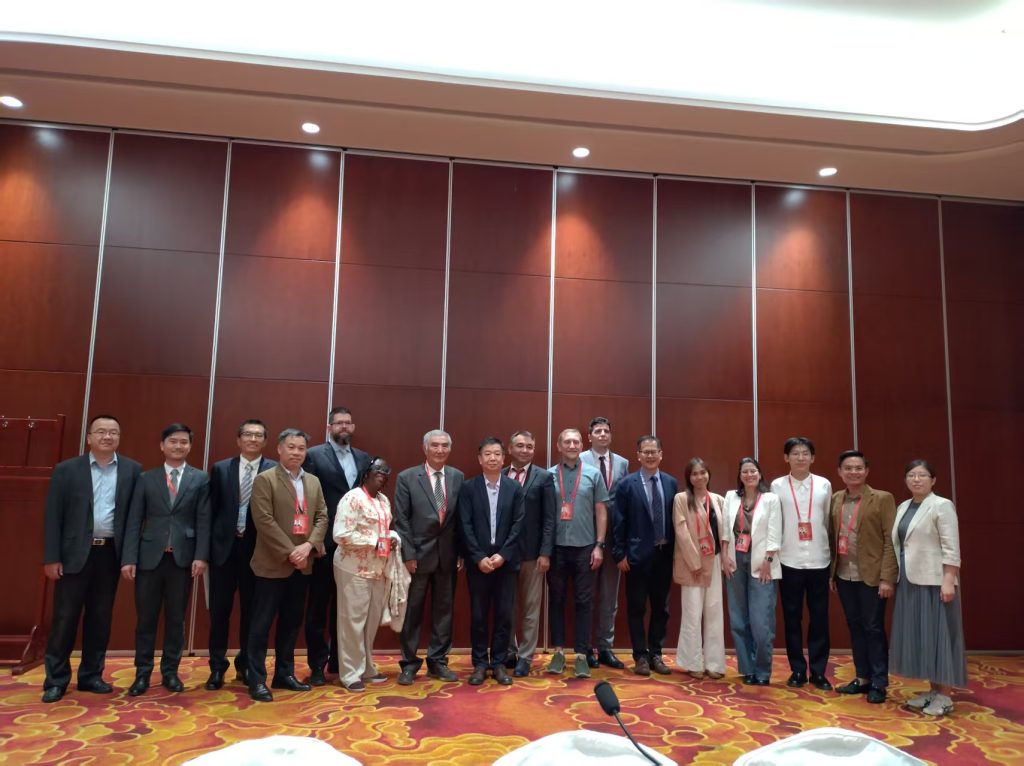
We saw first-hand a comprehensive and epic presentation of the grand century-long journey of the Communist Party of China. I needed someone to remind me, “Close your mouth, dear.”
Although we visited other museums, fantastic places with strong cultural affinity, and the largest bookstore in the city centre of Dunhuang but nothing compares to this Museum of the Communist Party of China.
Jiayuguan “Greening Years”
Jiayuguan is a modern industrial city that holds its audience spellbound with culture and diverse tourism resources. Its landscapes of historical sites like the Gobi wetlands, snow-capped mountains, and canyons, where Silk Road culture, Great Wall culture, and others converge, are enough for people all over the world to crave more visits.
The re-greening efforts in the Gansu region are just amazing, particularly in Jiayuguan. The landscapes are suggestive of a well-thought-out plan, over a long period of time, and crafted not just to offer aesthetics in the country but as an intentional module to combat climate change, improve air quality, mitigate pollution, and make the cities livable.
I got it from reliable government sources that for 31 consecutive years, the “Greening Year” initiative has been implemented, resulting in the completion of numerous ecological restoration projects and parks in China. This is a commendable effort for a country that looks ahead to greener years for the future generation.
The urban green coverage rates at 41.05%, with a per capita park green space area of 29.2 square meters. The compliance rates of drinking water sources, surface water, and ground water quality all reach 100%. These efforts have created a “park city” landscape where “greenery greets residents at every doorstep and scenery unfolds at every turn,” earning the city the reputation of “a gem of lakes and mountains in the Gobi.”
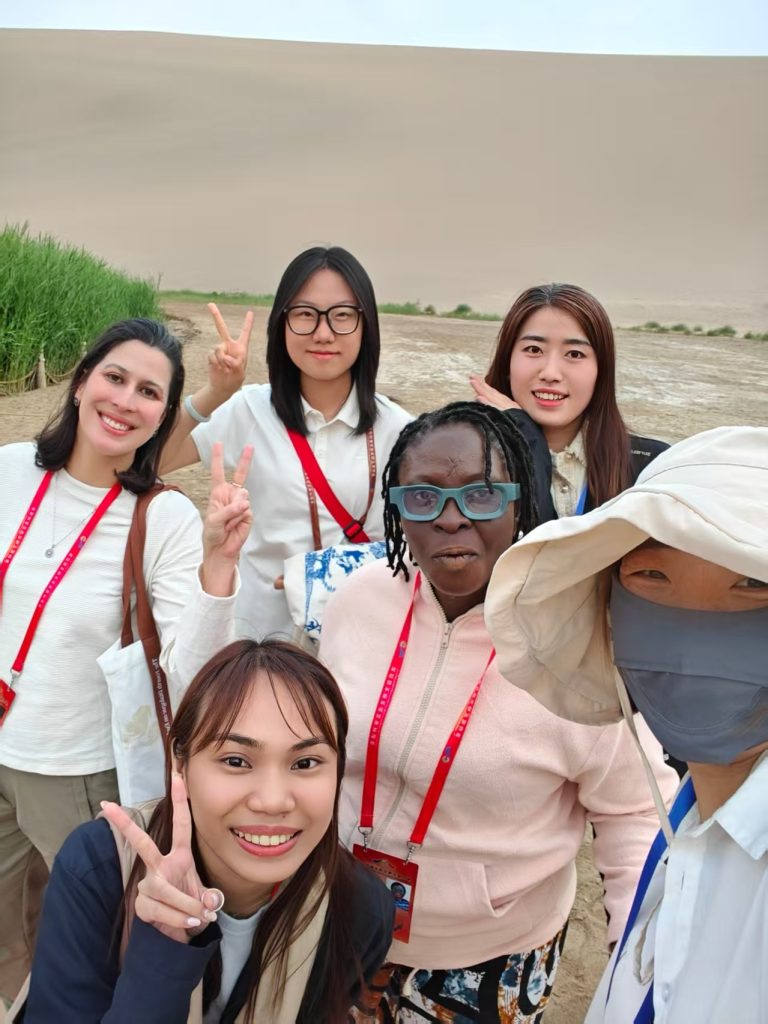
In recent years, the entire city has thoroughly implemented General secretary Xi Jinping’s important instructions during his inspection of Gansu, fully executed decisions of the CPC Central Committee and provincial party committee and focused on its functional positioning as a provincial pioneer zone for common prosperity, a demonstration zone for industrial transformation and upgrading, a high quality ecological and livable city.
My Takeaway
Nigeria and China have a history of bilateral economic, diplomatic, cultural and other ties marked by a deepening partnership across diverse sectors. Nigeria has benefited from this relationship.
From this visit as a member of the delegation to the Fourth Dialogue on Exchanges and Mutual Learning Among Civilizations, I got more insight into what it means for a nation to have a clear road map and intentional strategic long-term plan towards economic recovery and sustainable development. I felt a purposeful leadership towards achieving economic and developmental prosperity. Much as I saw ancient cultural heritage, the practical benefits of enduring policies and strategies of the government are evident in the growth process of the people. For me, it is a fine blend of culture, urbanization, and economic prosperity.
Therefore, I think Nigeria needs to push its exchanges and cooperation with China on the BRI framework, mutual understanding of the People-to-People Initiative, and as well as crack the secret of China’s development.
Gratitude is my attitude
I want to express my profound gratitude to China Centre Contemporary World Studies (CCCWS) for the hospitality and care. To Ikenna Emewu, Nigerian journalist and African Director at Zhejiang Normal University’s Africa Media Research Centre, thanks for giving me the platform and for recommending me.
To Lyd Ducusin, Assistant Director of the International Department of Ateneo de Davao University, Philippines, Ana Bravoe Paiva, Senior Researcher, Institute of International Relations, Brazilian Army Command and General Staff College, with whom I formed an instant bond, I will always cherish the memories we made within such a short period.
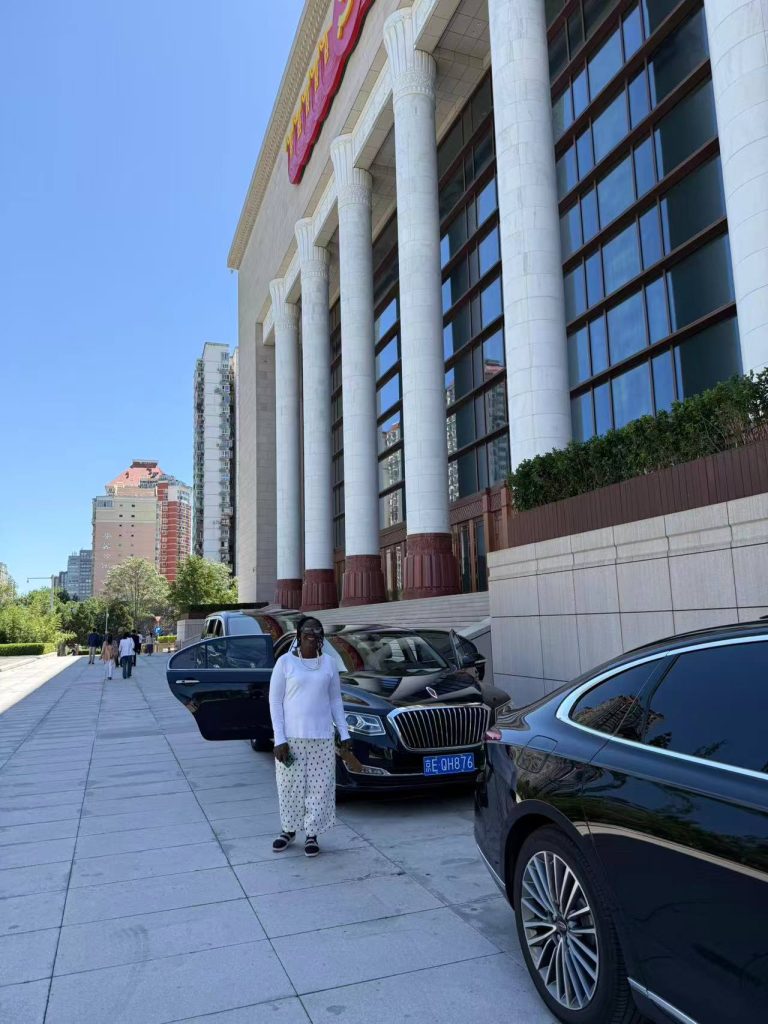
To our guides, Gao Lianjia and Jennifer, thank you for your excellent coordination. You literally parented us, especially looking out for everyone at all times. I am most grateful.
And to my colleagues who became a family throughout the period, thanks for sharing your love and friendship. Being part of the group was an awesome experience because of you.









